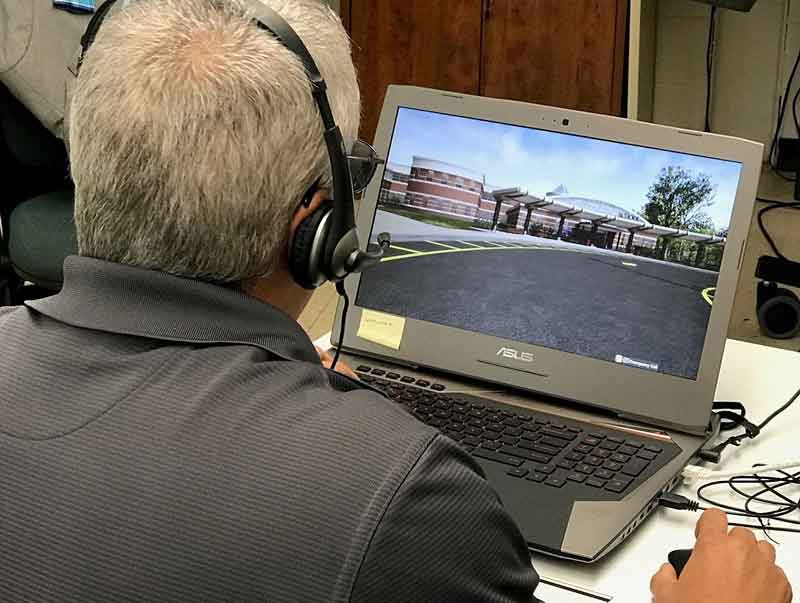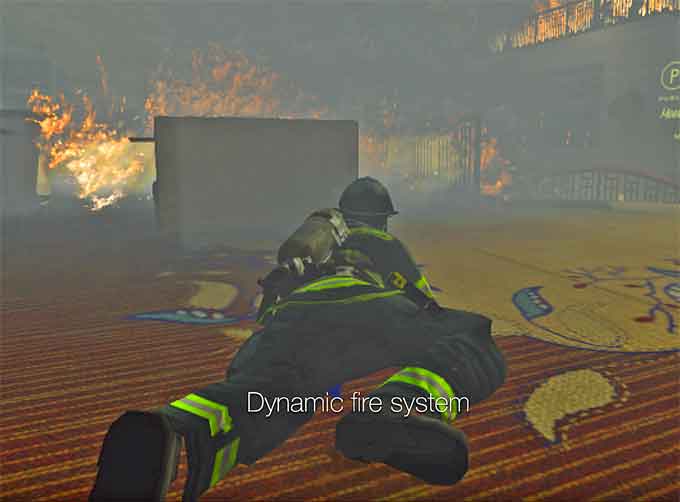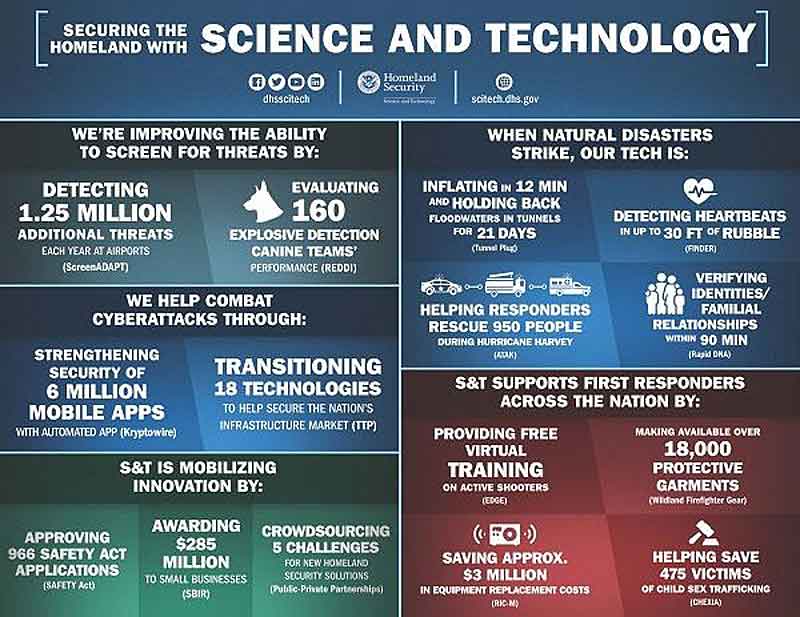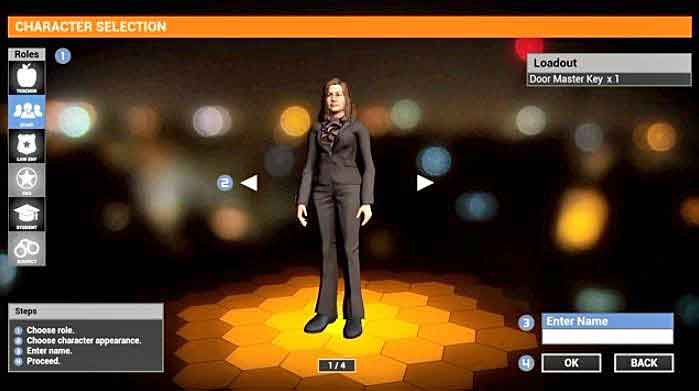
New Free Tool for First Responders and School Staff and Educators, is now available and at their disposal to help ensure the safety of our nation’s schools, as well as the students and faculty within them.

The Enhanced Dynamic Geo-Social Environment (EDGE), a professional virtual training platform and Finalist in the 2018 ‘ASTORS’ Homeland Security Awards Program, was developed by the Department of Homeland Security (DHS) Science and Technology Directorate (S&T), the U.S. Army Simulation and Training Technology Center (STTC), and Cole Engineering Services Inc. (CESI).
The EDGE virtual training platform allows teachers, school staff, law enforcement officers, EMS, firefighters, SWAT team members, first responders, and others tasked with school security and student safety – to create and practice response plan drills for a wide range of critical incidents.
(See in Action. Using video game technology and animation, the U.S. Army, Homeland Security Department and Cole Engineering Services have developed EDGE – a computer-based simulator that can train everyone from teachers to first responders on how to react to an active shooter scenario. Courtesy of AP and YouTube.)
“When it comes to the safety and security of students, there is no holding back,” said William N. Bryan, S&T Senior Official Performing the Duties of the Under Secretary for Science and Technology.
“In many cases, school staff are the ‘first responders’ at the scene of an on-campus incident.”

“We developed EDGE to help them prepare, so they have a new resource literally at their fingertips.”
“By using EDGE to train, they can know how to act swiftly, decisively, and in collaboration with local emergency responders if and when something does happen.”
Built on the Unreal 4 gaming engine, which powers popular video games like Fortnite and Street Fighter 5, EDGE allows first responders and educators to role-play complex scenarios in a virtual environment, improving and reinforcing coordination, communication, and critical decision-making skills.
Users control avatars representing their real-life role—teachers, administrators, school resource officers, local law enforcement, and more—to execute any number of training scenarios of their own creation.

EDGE offers all vetted team members, whether they be teachers, school resource officers, local EMS, police officers, firefighters, dispatchers, unified commanders, and more – a unique, powerful and versatile environment can be used to train for any type of incident, from parental custody disputes to potential bomb threats, an active shooter or any other critical incident on campus the user can envision.
Train
Realistic training scenarios arm first responders with the skills and confidence to respond effectively and efficiently during real-life incidents.
Virtual training provides responders with the opportunity to practice coordinated responses with multiple disciplines and jurisdictions in a cost efficient manner.
Test

When a gap in policy is identified, the First Responder Sandbox allows experimentation with a proposed policy change to test its viability without the large commitment of resources required to try the change in a live field exercise.
Review
With the First Responder Sandbox After Action Review capability, training instructors can record and later replay the exercise highlighting effective actions taken or areas needing improvement as many times or as often as needed.
EDGE is Not a Game

The Enhanced Dynamic Geo-Social Environment (EDGE), is a cutting-edge, advanced, interactive virtual training platform for professionals, to learn, prepare for, drill/practice, and mitigate emergency scenarios, available across the nation on federal, state and local levels.
EDGE is a training to develop cross-response skills and coordination between those most likely to be on site – or respond to critical emergency incidents on K-12 and higher learning campuses.
As the research and development (R&D) arm of the Department of Homeland Security (DHS), the Science and Technology Directorate (S&T) focuses on providing the tools, technologies, and knowledge products the nation’s Homeland Security Enterprise needs today and tomorrow.

EDGE is one of many tool DHS Science and Technology Directorate (S&T) is utilize to help our communities secure our schools, and other locations.
“While EDGE leverages the best that gaming technology has to offer, it is important to note that it is not a traditional video game,” explains S&T EDGE Program Manager Milt Nenneman.
“There are no winners or losers, and there are no pre-programmed situations to react to—EDGE allows agencies to create their own lesson plans, each with different outcomes based on the actions users take in the environment.”

“There is some artificial intelligence programmed in, but for the most part users control the reactions of their own avatars under the guidance of a training manager.”
“The level of threat and response can vary depending on specific training goals,” agreed Tami Griffith, engineer at the STTC in Orlando.
“This is an area that can turn chaotic quickly.”
“The EDGE simulation allows educators and first responders to train in a school environment with a wide range of threat types, which is true to everyday life.”
“The real value here is in the cross-response coordination. The more you train and prepare, the better the outcome.”
(See a 100 second video description of the Virtual Training tool, which enables responders from different disciplines, jurisdictions, agencies, and regions of the country, to train together 24-7, without traveling or disrupting their normal routines. Courtesy of DHS Science and Technology Directorate and YouTube.)
EDGE is a training environment that is intended to be a group training tool where multiple trainees can assume any of the roles above to execute the desired training.
It is not intended to be a single-trainee environment.
-
The EDGE environment is not a training course in the traditional sense, but rather EDGE is a tool instructors use to train their First Responder teams in a safe environment where training scenarios can be changed or re-run as many times as necessary to provide a wide range of training possibilities.
-
EDGE has an After Action review (AAR) capability where training sessions can be replayed with full pause, rewind, and fast forward controls to highlight key training points.
-
Sadly, First Responder budgets often limit the amount of live training that First Responders can conduct.
-
The EDGE training tool, while not intended to replace live training, provides the perfect way to augment and reinforce live training without the cost of a full-up live exercise.
-
EDGE was intentionally developed as a tool to supplement existing trainings, like field drills or tabletop exercises; because it is user-driven, it reflects the policies and procedures already in place in communities and school districts.
The EDGE team worked with stakeholders across the country to incorporate practitioner feedback into the training platform, most recently this summer and fall in school districts in Arizona, Ohio, and Florida, as well as in West Orange, New Jersey, where the actual school modeled in EDGE can be found.
(Learn More in Virtual Training Revisited which describes advances in the free computer-based training tool, including a virtual school environment for multi-agency training for active shooter incidents. Courtesy of DHS Science and Technology Directorate and YouTube.)
More on EDGE
The Enhanced Dynamic Geo-social Environment (EDGE) game-based software training application emphasizes flexibility and ease-of-use.
The First Responder Sandbox (FRS) component of EDGE allows First Responders to use a virtual environment to train coordinated responses to various types of emergency events (e.g., active shooter, hostage, fire, mayhem, etc.).

This training environment may be accessed from any location via the Internet or deployed in a classroom environment.
FRS v1.2.1 training roles include: Law Enforcement Officers, Fire Fighters, EMS, Dispatchers, and Unified Commanders.
Instructors and role players may enhance training by participating as armed suspects or unarmed civilians – emulating realistic operational environments.
“One of the things I say over and over is there isn’t enough training for educators in many aspects of school safety,” said Dr. Amy Klinger, Director of Programs for the Educator’s School Safety Network.

“This tool strikes a balance between ‘we have to train for the worst-case scenario’ and the more likely scenarios that we’re going to encounter every day.
“We know that violence occurs in schools, we know that you are going to have aggressive behavior and situations that don’t necessarily involve gun violence but that involve some other response that needs to occur,” Klinger added.
“EDGE gives educators an opportunity to immerse themselves in it, make decisions, analyze those decisions and think ‘OK, what would I have done differently?’”
“And then you can do it differently. As opposed to a one-time training, where you think ‘I wish I had done this.’”
(Assistant Professor of Educational Administration Dr. Amy Klinger discusses her research and work in school safety and crisis management. Dr. Klinger also discusses the new FEMA guidelines for school lockdowns in crisis situation and how that shapes the future of Educational Administration. Courtesy of Ashland University and YouTube.)
This is the second EDGE environment to be made available.
The initial version, released in June 2017, featured a multi-story hotel environment enabling first responders of all disciplines to train together for a coordinated response to active shooter and other critical incidents.
Who can access and train with EDGE?
The EDGE hotel environment is available free of charge to all first responder organizations, including:
-
Federal, state, local, tribal or territorial government law enforcement organizations
-
Federal, state, local, tribal or territorial government or volunteer firefighting organizations
-
Federal, state, local, tribal or territorial government or validated for-profit emergency medical services organizations
-
Federal, state, local, tribal or territorial government emergency management organizations
The EDGE school environment is available free of charge to the above mentioned first responder organizations, as well as the following education stakeholders:
-
Public or private elementary schools, secondary schools, colleges and universities and technical/career institutions for use in staff training

The new school environment is available at no cost to fully vetted response agencies and education institutions via the CESI EDGE Help Desk at (877) EDGE-011 or www.cesiedgetraining.com.
“You can never prepare enough. Using tools like EDGE—it can’t hurt, it can only help,” said Lieutenant John Morella of the West Orange, New Jersey Police Department.
The school depicted in the EDGE environment was modeled after a middle school in West Orange, and Morella himself provided critical input for EDGE’s research and development since its infancy.
“[EDGE is] another tool in our toolbox, and it will allow us to do more training and be more interactive—not only on the police side, but the education side as well.”

“It allows us to reset, go through multiple scenarios in a much shorter period of time, and it’s more efficient and cost-effective.”
“For this to be free, and for [responders and educators] to use this as often as they want…that’s a home run.”
With some planning and practice, response to schools can be a more efficient and coordinated effort.
DHS Science and Technology Named a Finalist in 2018 ‘ASTORS’ Homeland Security Awards Program
AST focuses on Homeland Security and Public Safety Breaking News, the Newest Initiatives and Hottest Technologies in Physical & IT Security, essential to meeting today’s growing security challenges.
 The 2018 ‘ASTORS’ Homeland Security Awards Program, is organized to recognize the most distinguished vendors of Physical, IT, Port Security, Law Enforcement, Border Security, First Responders, (Fire, EMT, Military, Support Services Vets, SBA, Medical Tech) as well as the Federal, State, County and Municipal Government Agencies – to acknowledge their outstanding efforts to ‘Keep our Nation Secure, One City at a Time.
The 2018 ‘ASTORS’ Homeland Security Awards Program, is organized to recognize the most distinguished vendors of Physical, IT, Port Security, Law Enforcement, Border Security, First Responders, (Fire, EMT, Military, Support Services Vets, SBA, Medical Tech) as well as the Federal, State, County and Municipal Government Agencies – to acknowledge their outstanding efforts to ‘Keep our Nation Secure, One City at a Time.
As an ‘ASTORS’ competitor, DHS S&T ‘EDGE’ is competing against the industry’s leading providers of Innovative Federal Government Training Program Solutions.
To Learn More about the ‘ASTORS’ Homeland Security Awards Program, see 2017 ‘ASTORS’ Homeland Security Award Winners Honored at ISC East.

Over 100 distinguished guests from National, State and Local Governments, and Industry Leading Corporate Executives from companies allied to Government, gathered from across North America and the Middle East to be honored from disciplines across the Security Industry in their respective fields which included representatives from:

- The Department of Homeland Security (DHS) Science and Technology Directorate (S&T)
- U.S. Customs and Border Protection
- The Department of Justice
- The Security Exchange Commission
- State and Municipal Law Enforcement Agencies
- The Royal Canadian Mounted Police
- Leaders in Private Security
The highlight of the 2018 AST Homeland Security Awards Season will be the 2018 ‘ASTORS’ Awards Presentation Luncheon to honor Nominees, Finalists and Winners on November 14, 2018 at ISC East 2018 at the Jacob Javits Exhibition Center in New York City.
Good luck to S&T ‘EDGE’ on becoming a Winner of the 2018 American Security Today’s Homeland Security Awards Program!
For more general EDGE information, visit https://www.dhs.gov/science-and-technology/EDGE or contact first.responder@hq.dhs.gov.
Join us in Recognizing these Industry-Leading Firms for their Outstanding Product Development Achievements, Exciting New Technologies and Innovative Education Programs to address the growing Homeland Security Threats our Nation is facing.
Take advantage of this exclusive luncheon opportunity to Invite your Guests, Clients and Show Visitors to a lovely & affordable plated meal event in the heart of New York City, for a Fabulous Networking Opportunity!
ISC East is the Northeast’s largest security industry event and your ‘ASTORS’ Awards Luncheon registration includes complimentary attendee access to the show.

Already Exhibiting and/or Attending the 2018 ISC East Conference?
Join us to meet the 2018 ‘ASTORS’ Award Winning Company Executives & Government Agency Representatives.
Register today for the ‘ASTORS’ Homeland Security Awards Luncheon on November 14th, in New York City and give yourself & your clients a break from the show!
Gourmet luncheon choices available per person, or reserve a table – make an Impression on your Guests and Receive an Exclusive Discount Opportunity.



















